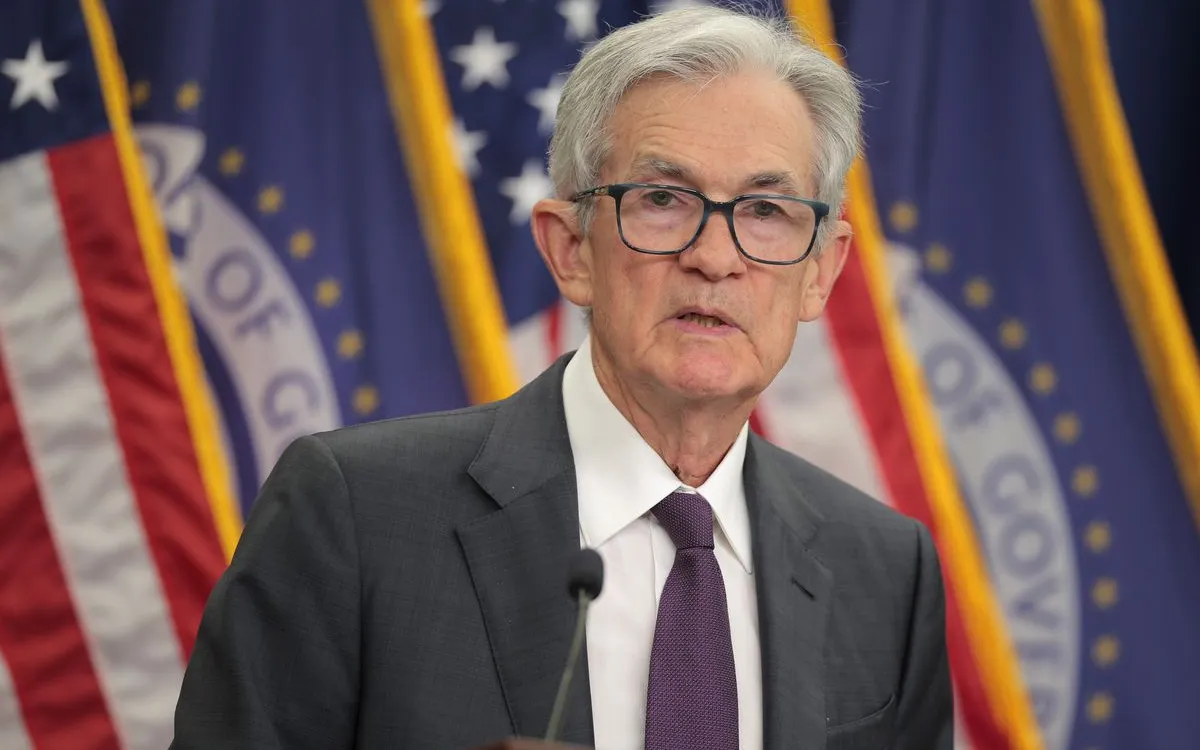
Federal Reserve Chair Jerome Powell is set to address attendees at the central bank's annual Jackson Hole Symposium on Friday. This highly anticipated event may serve as a crucial test for the stock market's rally following Liberation Day. Investors are expected to closely analyze Powell's remarks for indications of the Fed's policy direction in their upcoming September meeting.
Last year, the Fed implemented three rate cuts—50 basis points in September, followed by two cuts of 25 basis points each in November and December. However, the central bank has maintained a steady course in 2023, as officials await the economic impact of President Trump's tariffs and immigration policies. Market participants express confidence that the Fed may resume rate cuts next month, particularly in light of significant downward revisions to jobs growth revealed in July's employment report and largely positive consumer price data.
Recent data from the CME Group's FedWatch Tool shows that the probability of a rate cut has decreased to approximately 83% from 100% a week prior, indicating a shift in market sentiment. Despite this, Wall Street has displayed signs of apprehension leading up to Powell's speech. The S&P 500 and Nasdaq Composite experienced declines for two consecutive days, primarily driven by falling tech stocks.
Investors will be keenly listening for any shifts in Powell's perspective regarding the labor market and inflation outlook based on recent economic data. During his last address in July, Powell adopted a notably hawkish stance, asserting that the labor market remained "solid" and that inflation was still above acceptable levels, even when excluding tariffs, according to economists at Deutsche Bank.
Analysts at Deutsche Bank predict that Powell may adopt a more cautious tone this week, hinting that July's disappointing jobs report could signal further economic weakness ahead. However, they also expect him to continue emphasizing labor market slack measures, such as the unemployment rate, over headline payroll figures. The White House's immigration crackdown has significantly slowed labor supply growth this year, resulting in fewer jobs needed to sustain a stable unemployment rate and fulfill the Fed's dual mandate of maximum employment.
Powell previously noted this dynamic, describing the labor market as balanced. Deutsche Bank anticipates that he will express a more cautious outlook while still prioritizing metrics related to labor supply, which may introduce uncertainty regarding potential rate cuts in September.
If Powell adopts a hawkish approach—expressing concerns about the effects of tariffs on inflation and skepticism towards recent labor market weaknesses—it could spell trouble for a market banking on imminent interest rate reductions. Analysts at Evercore ISI have warned that stocks could experience a pullback of 7% to 15% heading into October if the optimistic market interprets Powell’s balanced view as hawkish.
The stocks most vulnerable to a Powell-induced decline are those that surged due to recent rate-cut optimism. For instance, shares of homebuilders D.R. Horton (DHI) and Lennar (LEN) climbed by approximately 25% and 18%, respectively, over the past month as investors anticipated rate cuts. Similarly, home-improvement retailers like Lowe's (LOW) and Home Depot (HD) have also benefitted from expectations that rate cuts will revitalize the sluggish housing market.
Conversely, a dovish pivot from Powell may ignite a rally in small-cap stocks and shift leadership among large-cap stocks, according to analysts at Bank of America. Equity analyst Jill Carey Hall noted that small caps typically outperform during rate-cutting cycles, particularly those coinciding with recessions, although their performance varies outside of economic downturns.
A rate cut, even in the absence of adverse macroeconomic data, could have a more favorable impact than historically observed due to the heightened sensitivity of small caps to interest rates and refinancing risks. Hall emphasized that the sustainability of a rate cut rally will likely hinge on the profitability backdrop, which will be influenced by the macroeconomic effects of tariffs, tax cuts, and other policy changes from Washington.
In a separate analysis, BofA's Savita Subramanian highlighted that the firm's US Regime Indicator—a measure of the business cycle—strengthened in July and could transition into the Recovery phase if it continues to improve in August. This scenario would bode well for smaller stocks within the large-cap S&P 500, which tend to outperform during this phase.
Historically, large-cap stocks have dominated the market, but if the Fed does decide on a rate cut and the Regime Indicator shifts towards Recovery, the trend may be nearing its end.